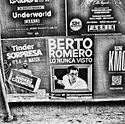Last year the PBS Nova science series released an hour-long episode featuring a close friend of mine, who built a 1/4 scale model of one of the smaller gate buildings to the Forbidden City. Then they set it on one of those huge seismic-simulation shakers, and kept ramping it up as far as possible, clear past Richter eleven, and couldn't topple it. He was working on another 1/20th scale model at his house when I visited him a couple months ago. The Ming engineers figured out how to build something with interlocking joints, totally devoid of even screws or nails, or even a fixed foundation, more resistant to their frequent earthquakes than anything we can do with structural steel and concrete today. Characteristically, most of the quickie public construction in China today has proved to be miserably fragile in earthquakes. The achilles heel of the Ming buildings was fire. And hundreds of thousands of lives were lost as slave labor. The Grand Canal itself, which brought hardwood logs almost two thousand miles, was one of the greatest engineering accomplishments of all time, and even more brutal. Today, the shady policies of the big box corporations insist on inferior junk products, patent violations, safety shortcuts. I know the story extremely well. But I also set up the first Makita retail dealership in the US, with things as weird and heretical as power mitre saws and plunge routers - almost got fired by the owner for that kind of audacity investing his money - who in their right mind would pay several hundred dollars for a mitre box when you can get a maple one for a dollar and ninety-nine cents? But Makita first had to overcome the Japanese reputation for junk. So they handed out samples. I still have that orange corded drill - truly lifetime quality. And my ole cast iron mitre saw is still going strong after nearly 40 years of hard use, albeit a relatively heavy shop tool by today's standards, but much more precise. Then it was Taiwan's turn, and they evolved from their notorious junk phase to making superb iron castings - something China still has a problem with. So it all depends on what people are willing to pay for. You don't get something for nothing. And all this talk of non-competitive outsourcing is a bit misleading, because so much of it is Wall Street mandated bait and switch marketing in the first place. But we're slowly learning how to make expendable junk too, unfortunately.











